Posts Categorized / Mothkeeping
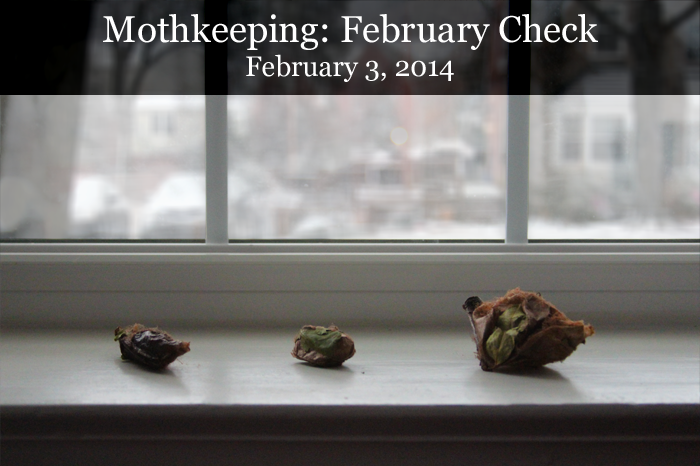
Even though I’ve been checking on the cocoons regularly every month, life’s been so hectic that I missed several entries. Time to catch up! I’d love for spring to be close so my moths could come out soon, but it’s snowing today, and the groundhog saw his shadow. I always hope he’s wrong.
The leaves worked into the cocoons are dry and crumbly now, but the trio is still doing well. I can feel their weight when I hold them. The luna hasn’t wriggled in a while and isn’t as heavy as the cecropias, yet its healthy heft remains. Everything’s business as usual for these buggies. It’s simply a matter of time.
It occurs to me that I actually haven’t shown what these moths are going to look like in their adult forms. I’ve painted both species:
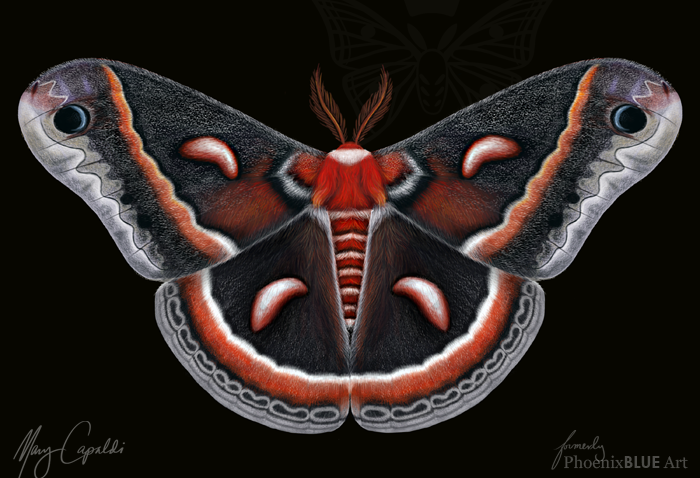
Cecropia Moth (Hyalophora Cecropia) – two of these will eclose.
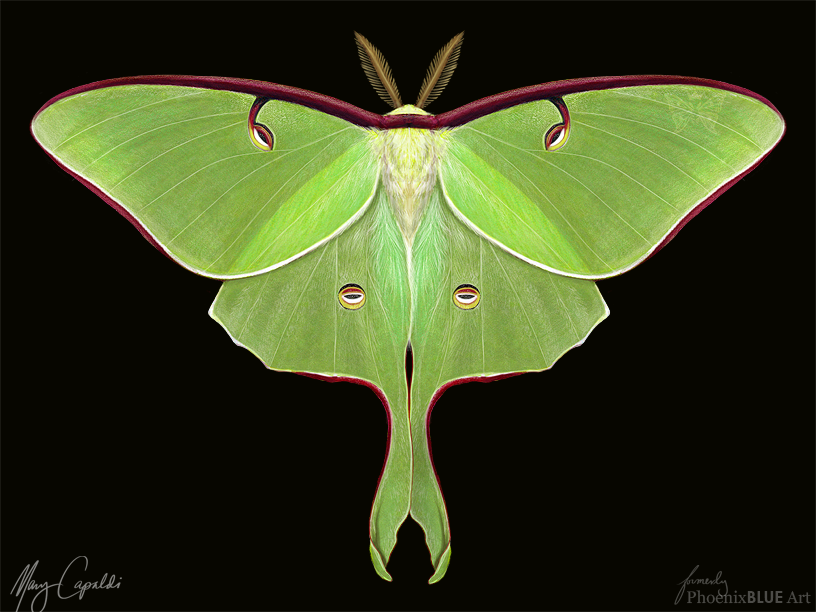
Luna Moth (Actias luna) – one of these will eclose.
The cecropias I intend to keep, hopefully mate, and eventually pin or preserve after their natural deaths. I originally got the luna moth to share with my dad, but now that he’s passed away, I’ve decided I may release it at the grave site a day or two after it ecloses. It’s the best way I can think of to still share it with him, and since luna moths are a native species in my area, it won’t interfere with the environment.
Of course, I’m raising moths because I’m most interested in their lives, but it’s tricky for me to talk about that stage just yet since I haven’t experienced it! I’ve never even seen either of these species in person before despite their known presence in my area. I can’t wait to share these moths’ days, take pictures, maybe even do a video or streaming session with them live. It’s a true test of patience to make it to spring, but we’re more than halfway there.
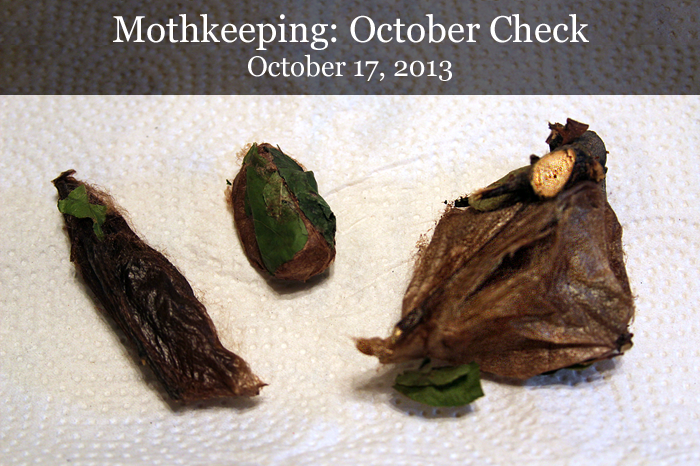
A little less than a month ago, I put my cocoons away in the fridge and resolved not to check on them too often. Waiting has been difficult, and finally I took a peek into the little plastic container today to see how the buggies are doing. I carefully laid the cocoons out on a paper towel, then picked them up one at a time and felt their weight. Everyone is still alive and healthy!
The cecropia cocoons in particular have darkened since I first received them. Both are dry, but the tight one is stiffer in texture while the loose one feels soft and roomy. The pupa in the tight cocoon doesn’t move that I have noticed but has not lost its life-indicating weight.
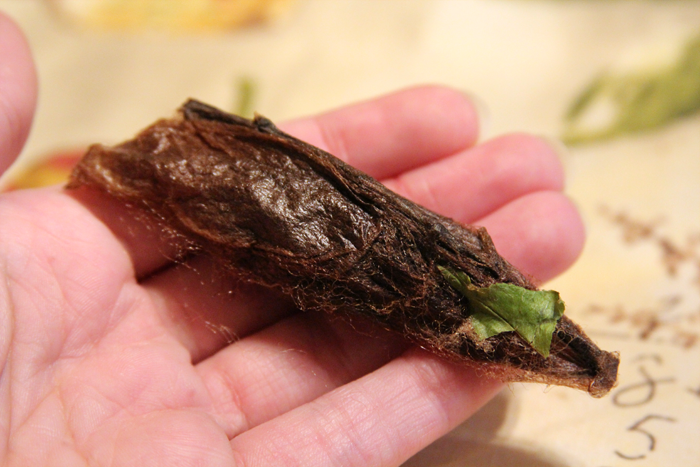
The tight cecropia cocoon is rather shiny.
The luna, on the other hand, is still wriggling around when picked up. It makes little crinkly sounds against the leaves and can be felt moving inside. Because the cocoon is so small and its occupant is so lively, I’m leaving it to emerge as it would in the wild. I find it interesting that the luna used a lot of leaves to make its cocoon while the cecropias both used sticks.
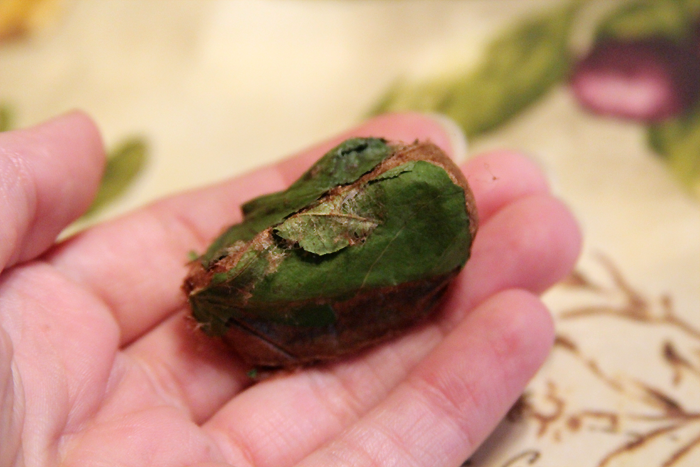
The luna moth flexed inside the cocoon when held.
Since the loose cocoon seemed to have enough give for me to safely make a cut in it, I decided to take a peek inside. Unlike butterfly chrysalises, these moths’ cocoons are like little sleeping bags and can be opened in captivity without harming the developing bug inside. Cecropias have a couple layers to the cocoon: the outside, which is what I’ve shown in these pictures, then a sort of wooly layer wrapped around the pupa, and finally the pupa itself. I was extremely careful to feel out where the pupa was inside and make the slit away from it to avoid any damage. The pupa itself must not be hurt in order to survive to adulthood.
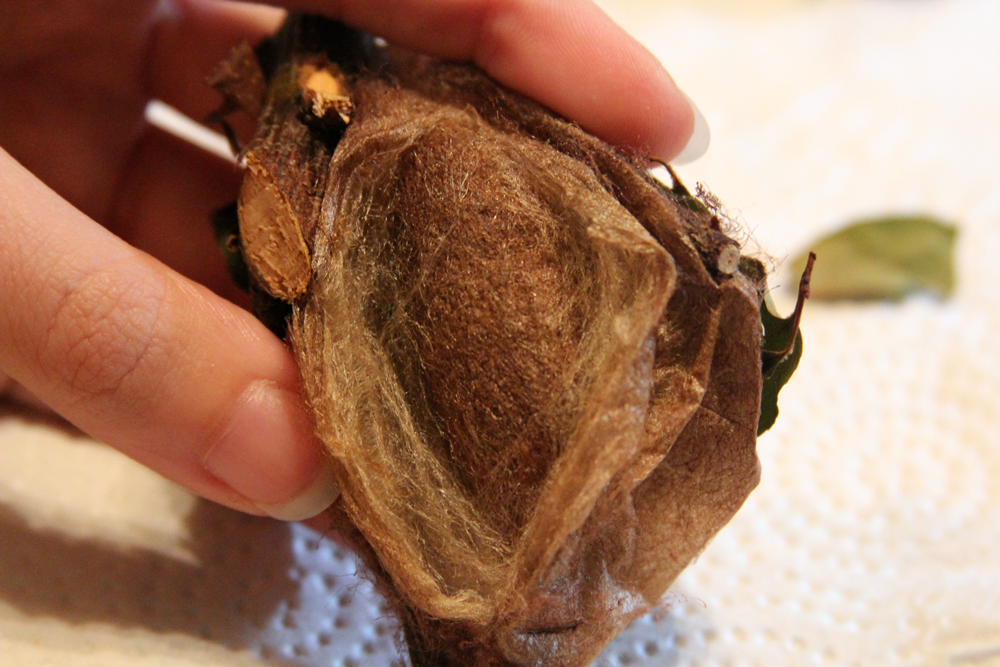
The wooly layer of the cecropia cocoon, nestled safely inside the outer “sleeping bag.”
Even though the outer cocoon was loose, the wooly layer seemed very close around the pupa, so I am going no further for now. The other cecropia cocoon is so tightly made that I do not feel safe trying to open it and would rather leave the bug to its own devices than jeopardize its survival with my inexperience. Later on I may decide to open the loose cocoon’s wooly layer and sex the pupa; for now, I’m guessing the loose cocoon is a girl and the tight one is a boy. In fact, I’ve started imagining them all as having unique little personalities based on their cocoons:
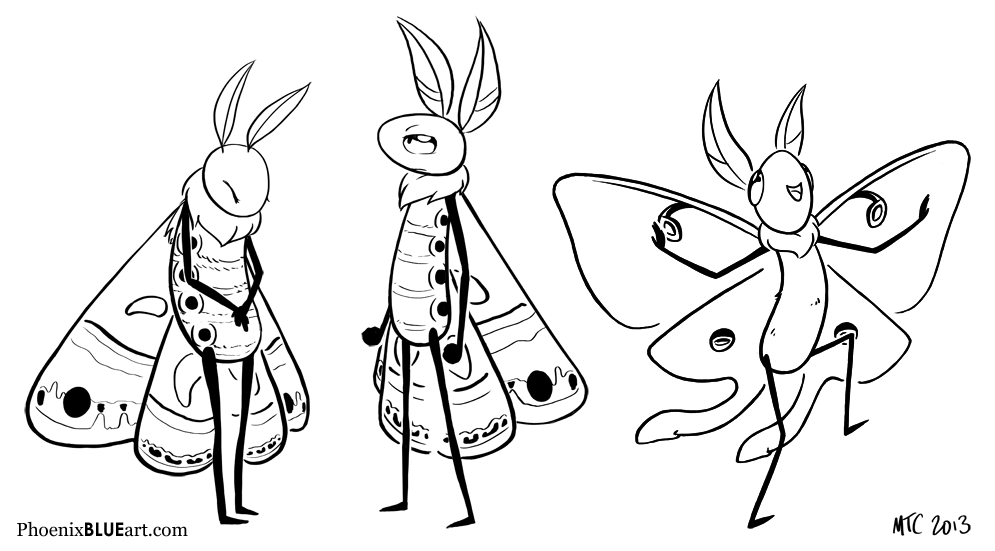
The loose and tight cocoon cecropias respectively, and the wriggly luna, as my moth people.
I have a feeling the potential of these creatures will continue to inspire me as I pass the long winter with them, waiting for the weather to warm again and their adult lives to begin.
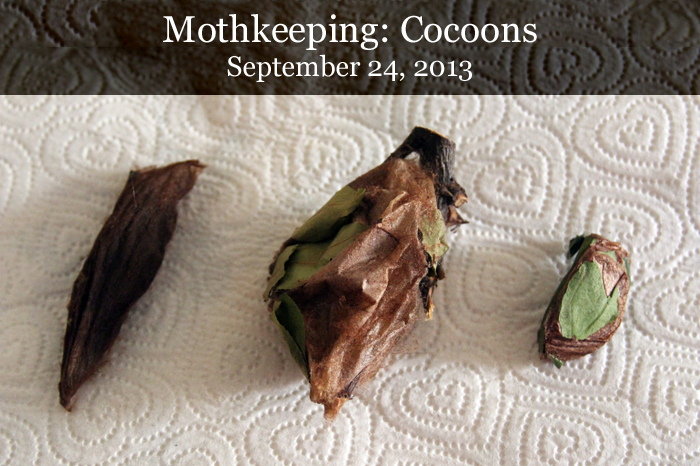
Not long after my rediscovery of my love for bugs, I decided I wanted to raise some moths in captivity in order to observe them, give them a comfortable life during their short time, and potentially preserve them after death. A little research led me to Pinebaskets, the site of a crafts artist and moth breeder who offers moth eggs and cocoons at various intervals during the year. I was originally only going to get a couple cecropias, but my dad wanted to see a luna moth, so I ordered one too. Yesterday, the cocoons arrived safe and sound.
Though I can’t sex the moths from the cocoons as they are, I could easily tell which were the cecropias and which was the luna. The cecropia cocoons were much larger, which makes sense since the resulting moth is larger, too. The pair I received displayed an interesting difference in cocoon construction – one was slender and tight, the other loose and thick. Apparently, it makes no difference to the pupae inside.
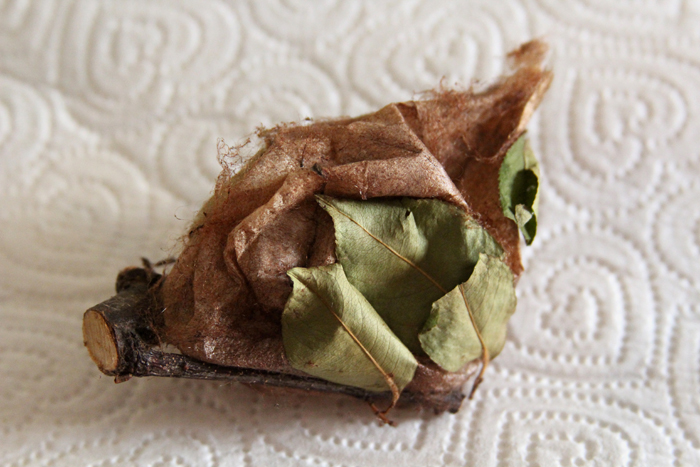
This cecropia cocoon is baggy; it was spun with a branch and leaves, some of which remains attached.
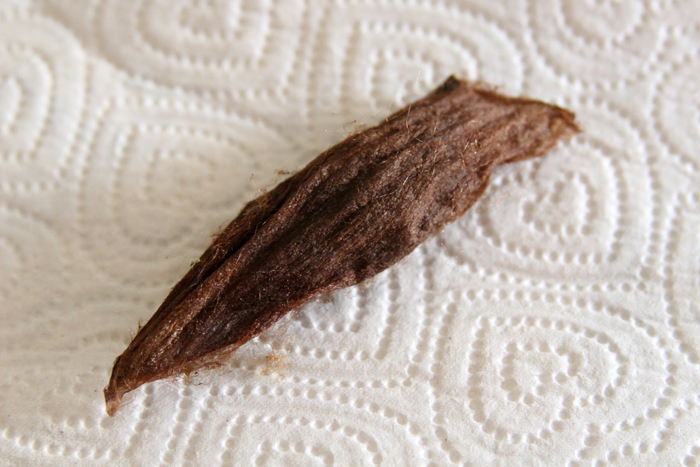
This cocoon is longer and thinner, free of leaves but otherwise identical in texture.
If the pupae inside a cocoon feels weightless, it has died. I held each cocoon gently after taking photos and felt a healthy weight inside them all. Later, I may decide to carefully make a slit in the cocoons to check on the pupae inside, but I figured they’ve probably had enough trauma for now being bounced around in the mail. Checking on the pupae will allow me to determine the sexes of the moths. My gut guess is two boys and a girl.

This smaller cocoon houses the luna moth.
I had already read up on what to do with the cocoons until spring; the instructions included by the breeder were what I expected. After I was done checking the cocoons, I placed them in a ziploc bag and tucked it back into the container they came in. And then, that went in the fridge.
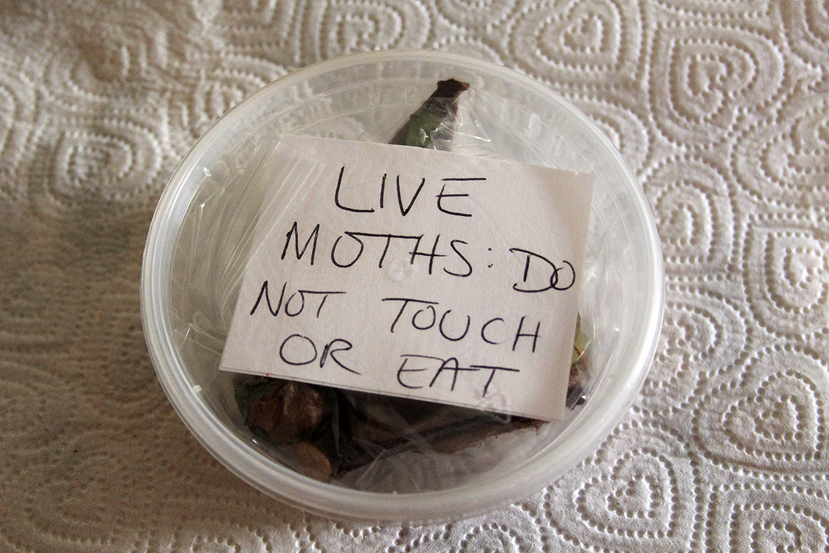
Snug and safe in a container for their simulated overwintering.
I plan to check on the moths periodically throughout the winter and update on the status of the cocoons. When spring comes, they’ll be taken out and exposed to the warm air, which should encourage them to emerge in a matter of weeks. There will be plenty of pictures and journal entries then! It’s going to be really hard to wait!




 Posted by Mary in
Posted by Mary in 









